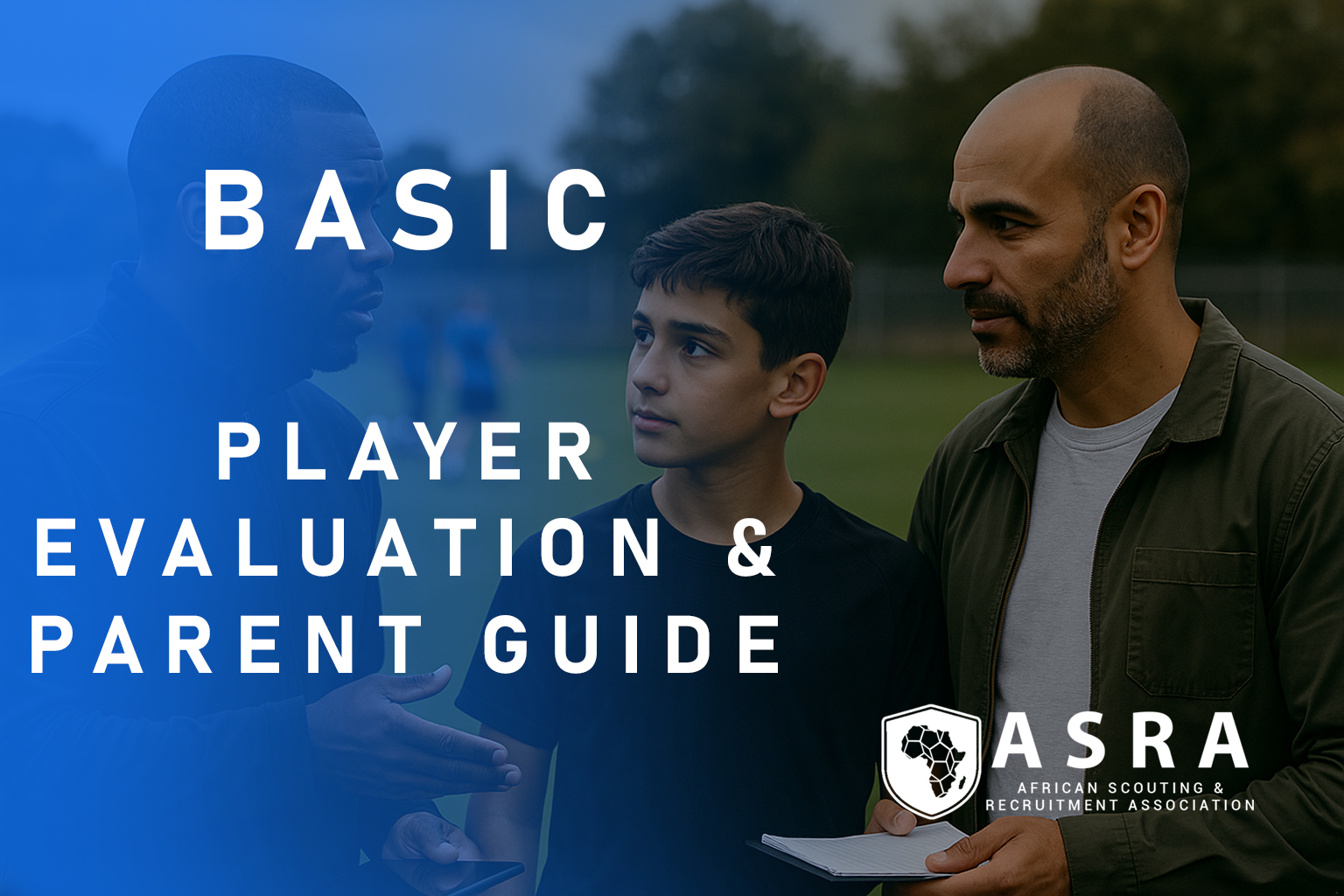Blending Cultures, Data, and Development in Modern Football
By ASRA Media
When you speak to Shawn Bishop, there’s an instant calm that comes with experience, the kind that only comes from spending years across football’s most contrasting environments.
From the structured academies of Belgium, to the fast-rising football ecosystem of Saudi Arabia, and the raw, passionate energy of South Africa, Bishop has seen first-hand how culture shapes both the player and the process.
Now part of the technical team at Royal Union Saint-Gilloise in Belgium, Bishop’s journey offers a rare perspective, a blend of African intuition and European precision. In this exclusive conversation with ASRA, he shares his insights on football culture, youth development, and how data is quietly reshaping the modern game.
Q1: How has your transition to Europe been, especially in terms of football culture and talent expectations?
Shawn Bishop:
It’s been eye-opening. Over the past three years, we have developed a sort of South African football culture — even with our regional differences, there was still a shared identity.
In Portugal, Saudi Arabia, and now Belgium, the influence of culture is massive. Belgium, especially, is a melting pot of talent. You’ve got players from North Africa, Egypt, Morocco, and then you feel the French influence in the south, the Dutch in the north, and the Germans in the east.
It’s fascinating how clubs just five or six kilometres apart can have completely different football cultures. Take Royal Union, we’re based in Brussels, but our training complex is just outside the city, so we get a lot of kids from middle-class European families and Moroccan backgrounds. Two kilometres away, you have Anderlecht, who operate inside the city walls, with a more French-influenced environment. Their first selection criterion is physical presence, whereas at Royal Union, we focus more on technical ability. That suits my own football philosophy perfectly.
Belgium has been incredible in that sense. The coaching culture is progressive, and the implementation of the game model here has been very strong. Compared to Saudi Arabia, where there’s now a tsunami of football knowledge flooding in from Spain, Portugal, and beyond, Belgium’s systems feel more established, built on years of refined methodology.
In terms of talent, I’d say South African players are more technical up until about 11 or 12. But here, the environment — nutrition, facilities, and daily access to the game, changes everything. There’s a futsal court outside my apartment that’s full from 4 p.m. until midnight every day. Football here isn’t just training, it’s culture. That’s why a small country like Belgium has been number one in the world rankings before, and still sits in the top ten.
Q2: What differences have you noticed between African and European development — particularly in how players are tracked, measured, and evaluated?
Shawn Bishop:
There’s a big gap. In South Africa, from my experience in the GDL with Sundowns, you’ve got two categories of clubs — the big ones like Sundowns, Chiefs, and SuperSport, and then the rest. The difference is massive.
At Sundowns, we were already tracking and measuring players, but here in Europe, it’s non-negotiable. It’s written into the licensing protocols for academies — if you don’t do it, you lose your license.
From under-10 level, every player’s height, weight, and data points are recorded monthly and submitted to the federation. It’s the same in Saudi Arabia, where academies are categorised as Elite 1 or Elite 2 based on how they meet development standards.
In South Africa, that level of accountability just isn’t there. Clubs can choose to monitor development if they want to, but most don’t. Here, the process is structured — you meet certain criteria before you can even be granted your academy license. That kind of system creates real accountability and ensures that growth is measurable and sustainable.
Q3: Can you integrate personal data and video analysis into your scouting and coaching work?
Shawn Bishop:
Absolutely. You can’t separate the two anymore — they’re completely intertwined.
Each player has an individual development plan that links video clips to specific strengths and weaknesses. In terms of data, we keep things simple — six main KPIs across the academy. We have six full-time analysts here, and when I was in Saudi Arabia, I had twelve, so it was easier to manage player plans at scale.
This integration is vital. Whether it’s for coaching preparation, research, or player improvement, video and data are now part of everyday football life. You simply can’t work without them.
Q4: What are some of the key metrics and performance indicators you rely on most at youth level?
Shawn Bishop:
We don’t overcomplicate it. The goal is to make the analysts’ job doable — not to drown them in meaningless KPIs that no one uses.
We break the game into four moments: in possession, out of possession, transitions, and set pieces.
For example, in possession, we track just three KPIs:
- Danger Created – entries into the final third.
- Progressive Passes – vertical passes that break a line.
- Successful Build-Ups – any sequence that starts from a goal kick and crosses the halfway line in controlled possession.
For the other phases, we apply the same principle, three KPIs per moment. It keeps analysis clean and consistent.
If coaches want to dig deeper, they cut and tag that footage themselves. That’s key, they need to learn the tools, not outsource understanding. In modern football, data and video aren’t luxuries, they’re the foundation.
Q5: Have you ever had a moment where data shifted your view of a player — either confirming or challenging what you saw live?
Shawn Bishop:
Yes, absolutely. It happens often, and I almost expect it now.
Recently, we were discussing a U15 right-centre-back with one of our coaches. I felt the player wasn’t quite at the level for our club, but the coach disagreed. Then we played Utrecht away. In the first half, we had 21 build-ups, 11 of them went through that centre-back, and all 11 failed. Not one completed pass.
We reviewed the data and video together. It turned a subjective debate into an objective discussion. The coach admitted the player had a bad game, and that’s fair, but the numbers gave the conversation structure. They validated what I had seen live, and now we’ll track him again over the coming weeks.
That’s how data should work, not as a replacement for the eye, but as evidence for it.
Q6: For the average African coach, which tools would you recommend, and where should they start?
Shawn Bishop:
There really aren’t many excuses anymore. Most coaches have a smartphone, that’s already a start. You can record training sessions, matches, anything.
There are free tools online, like FC Python, where you can upload footage and run basic analytics. There are even PowerPoint-based framework templates that I’ve shared before in the South African coaching community, which can be used for match analysis and reporting.
The key is to just start. Don’t wait for perfect resources. There’s plenty on YouTube if you want to learn Python, Tableau, or Power BI, all critical if you want to move into football analytics.
And remember: data must be visual. Don’t throw spreadsheets at football people. We need to see the story.
Data should either confirm or challenge a coach’s bias, that’s its true value. Analysts must understand this balance: don’t overwhelm players or coaches, and always communicate insights in a way that’s readable, relatable, and relevant.
Make the data speak human.
What We Learned from Shawn Bishop
Shawn Bishop’s story underlines a truth that African football can no longer ignore, structure wins. Whether it’s player monitoring, data literacy, or academy licensing, sustainable progress comes from accountability and systems, not slogans and sentiment.
Belgium’s success isn’t built on luck. It’s built on culture, consistency, and curiosity, a willingness to test ideas, measure progress, and keep players in an environment that feeds their growth.
For Africa, the lesson is clear: we don’t lack talent; we lack structure and context. The gap between potential and performance narrows when we collect data, film sessions, and analyse decisions, not to judge players, but to understand them.
In Bishop’s words, the modern coach must be both human and analytical. Because in football’s future, emotion still leads, but evidence keeps it honest.





